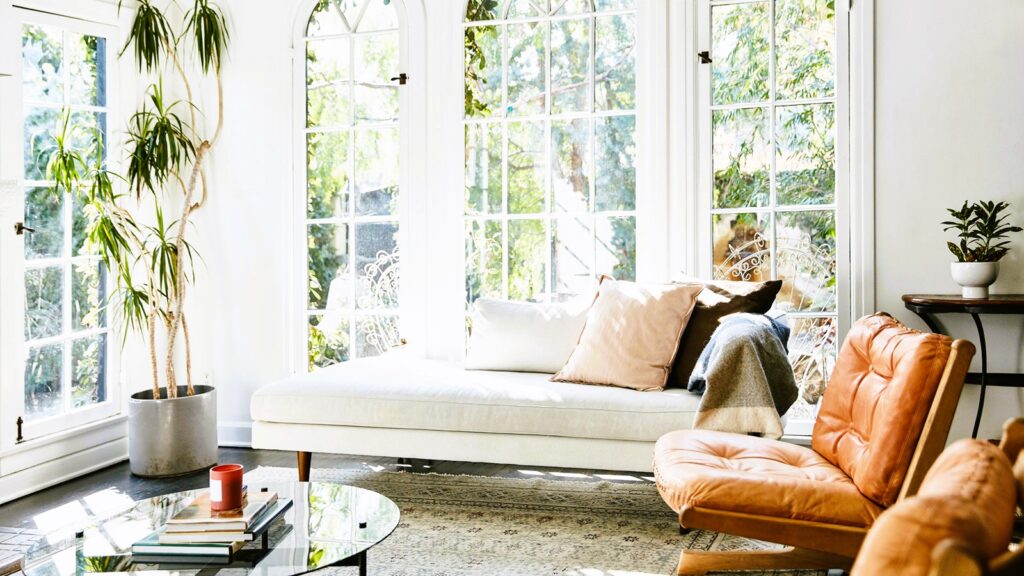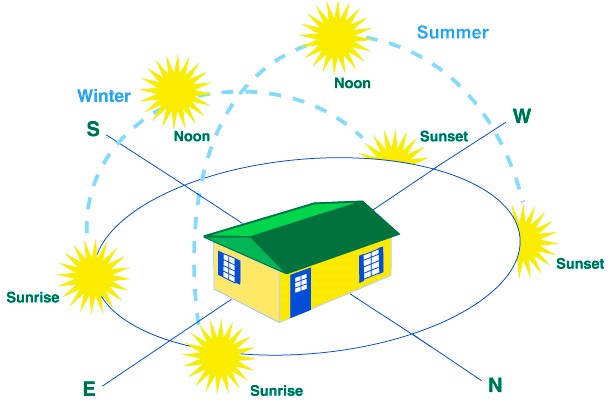Window orientation plays a significant role in the energy efficiency and daylighting of residential buildings. The orientation of windows determines how much sunlight enters a home, impacting both heating and cooling loads as well as the quality of natural lighting. In this article, we explore how window orientation affects energy efficiency and daylighting in homes and discuss strategies for optimizing window placement to maximize benefits.
Understanding Window Orientation
Window orientation refers to the direction in which windows face relative to the cardinal directions: north, south, east, and west. Each orientation has distinct implications for energy performance and daylighting, influenced by factors such as solar exposure, shading, and climate conditions.
South-Facing Windows

South-facing windows receive the most sunlight throughout the day, making them ideal for passive solar heating in colder climates. During the winter, south-facing windows allow ample sunlight to enter the home, warming interior spaces and reducing the need for artificial heating. However, in warmer climates, excessive solar heat gain from south-facing windows can lead to overheating, necessitating shading devices or high-performance glazing to mitigate heat gain.
North-Facing Windows
North-facing windows receive minimal direct sunlight and are less prone to solar heat gain. While north-facing windows do not contribute significantly to passive solar heating, they provide consistent, diffuse daylighting throughout the day, making them ideal for spaces where glare and heat gain are undesirable, such as bedrooms and offices. Read about understanding solar heat gain coefficient (SHGC) in our article.
East-Facing and West-Facing Windows
East-facing windows receive direct sunlight in the morning, providing natural light and warmth during cooler hours. However, they may also contribute to glare and heat gain, especially in hot climates. West-facing windows receive direct sunlight in the afternoon and evening, which can lead to overheating and increased cooling loads. Proper shading strategies, such as overhangs or exterior blinds, are essential to control solar heat gain from east and west exposures.
Optimizing Window Orientation

When designing or retrofitting homes for energy efficiency and daylighting, several strategies can help optimize window orientation:
- Passive Solar Design: In colder climates, prioritize south-facing windows to maximize passive solar heating during the winter months. Ensure adequate thermal mass, such as masonry walls or concrete floors, to store and release solar heat efficiently.
- Shading Devices: Install shading devices such as awnings, overhangs, or exterior blinds to control solar heat gain from east and west exposures, especially during the summer. Adjustable shading systems allow for flexibility in managing sunlight and heat gain throughout the day.
- High-Performance Glazing: Select windows with low solar heat gain coefficients (SHGC) and high visible light transmittance (VT) to balance daylighting and energy efficiency. Low-E coatings and insulated glazing units can further enhance the performance of windows in different orientations and climates.
- Daylighting Strategies: Combine natural daylighting with artificial lighting controls, such as dimmers and sensors, to optimize energy use and enhance visual comfort. Consider the placement of windows relative to interior spaces to maximize daylight penetration and minimize glare.
Standards and Regulations
Several organizations provide guidelines and standards for energy-efficient building design and window performance evaluation. For more information on window orientation and energy efficiency standards, you can visit the following websites:
- Wikipedia – Passive solar building design
Window orientation plays a crucial role in the energy efficiency and daylighting of residential buildings, influencing heating and cooling loads, natural lighting, and indoor comfort. By understanding the implications of different orientations and implementing appropriate design strategies, homeowners can optimize energy performance and create more comfortable living spaces. Whether designing a new home or retrofitting existing structures, thoughtful consideration of window orientation is essential for achieving sustainable and efficient building design.

